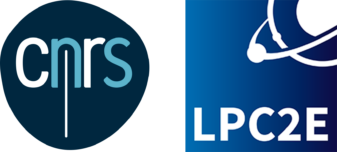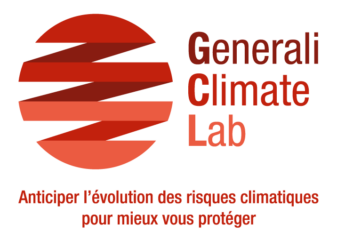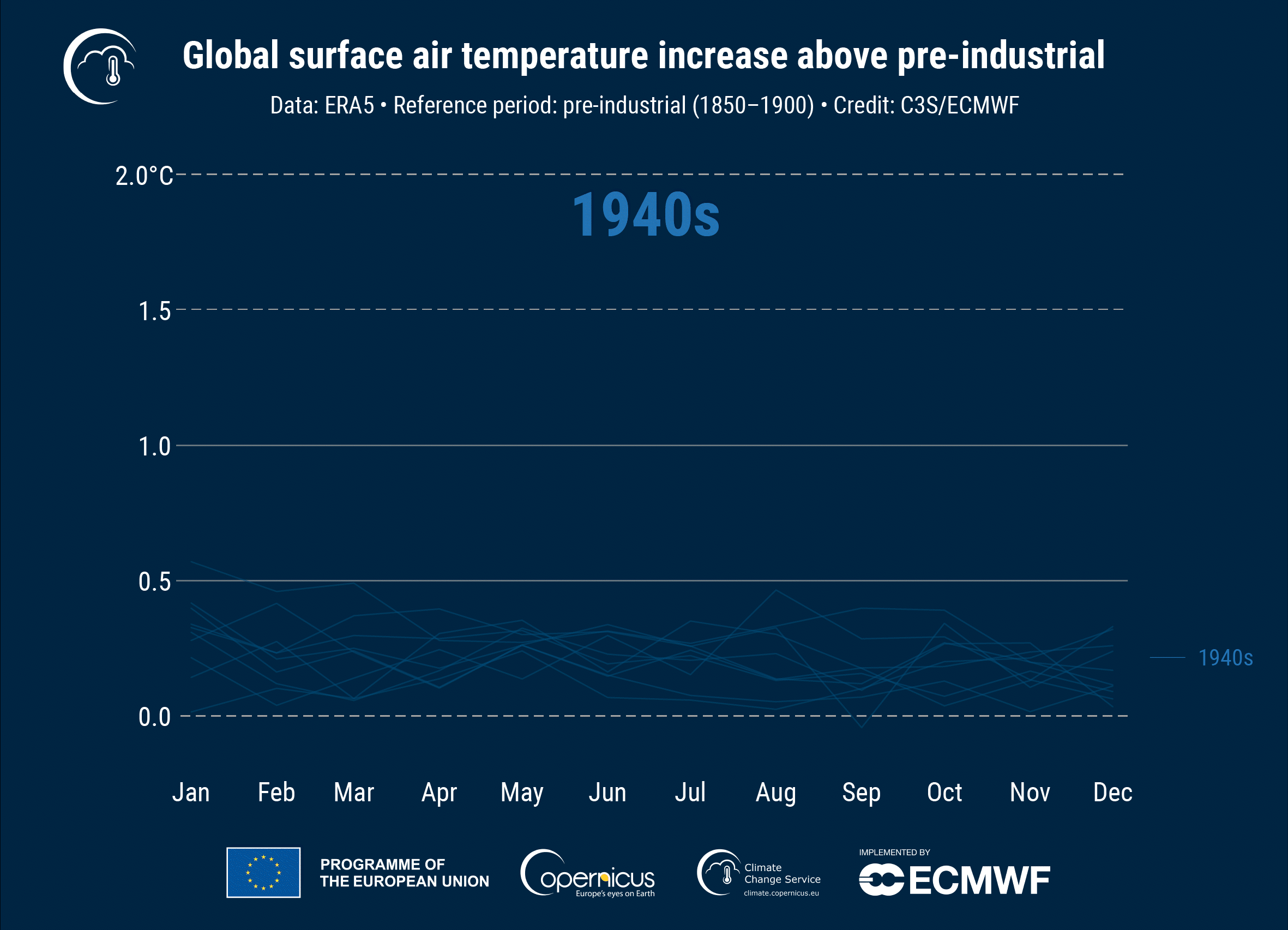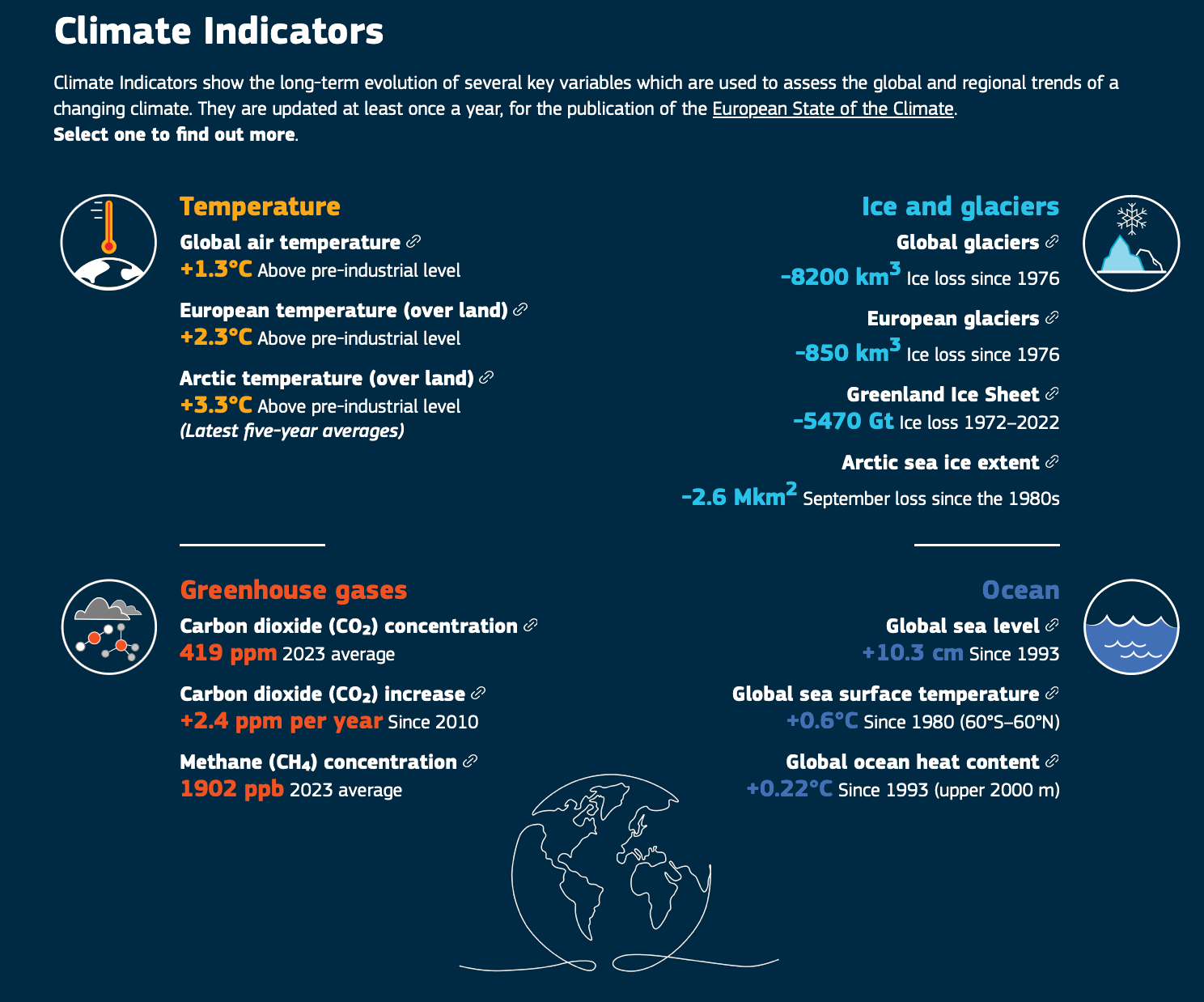Partenaires

Le ballon Generali de Paris, fruit d’un partenariat original entre l’assureur Generali, la Ville de Paris et l’entreprise Aerophile, est devenu au fil du temps un véritable laboratoire volant. Il est aujourd´hui le cœur d’un consortium scientifique regroupant des partenaires prestigieux tels que ECMWF-Copernicus, ICOS, le CNRS via notamment son laboratoire LPC2E, Lify Air etc.
Ville de Paris
La Mairie de Paris : un partenaire historique, impliqué dans la lutte contre la pollution de l’air et le changement climatique
Engagée dès l’origine du projet aux côtés d’AEROPHILE, la Mairie de Paris renouvelle son soutien au Ballon Generali de Paris.
Situé au Parc André Citroën, dans le 15e arrondissement, le ballon a été installé dans le cadre des festivités de l’an 2000, accueillant à l’origine un large public pour lui faire découvrir une vue d’ensemble de la capitale à une altitude de 150 mètres. Cette animation est devenue une attraction touristique à part entière de la capitale, parfaitement intégrée. À ce jour, 1,5 million de passagers ont déjà été accueillis à bord.
Au-delà de l’attraction très appréciée, le ballon est aussi un outil scientifique et pédagogique, pour sensibiliser les parisiens à la qualité de l’air.
Depuis 2008, en collaboration avec Airparif et le CNRS, le ballon est devenu un indicateur de la qualité de l’air aisément visible. II change en effet de couleur en fonction des niveaux de pollution : du bleu (bon) au violet (extrêmement mauvais), en passant par le vert (moyen), le jaune (dégradé), le rouge (mauvais), le bordeaux (très mauvais).
Depuis 2013 c’est devenu un véritable laboratoire innovant et unique au monde en cœur d’agglomération, qui permet de mesurer divers polluants de l’air, dont les particules fines. Le ballon offre non seulement un accès à l’information sur la pollution atmosphérique mais constitue une opportunité unique d’étudier la composition de différentes couches de l’atmosphère.
Enfin, le ballon Generali de Paris permet désormais de soutenir la recherche sur le changement climatique. Depuis 2024, le ballon mesure les principaux gaz à effets de serre dans le cadre d’un partenariat avec le programme de recherche européen ICOS Cities. Et depuis 2025, il affiche des indicateurs du réchauffement climatiques sur son enveloppe en partenariat avec l’ECMWF (European Centre for Medium-Range Weather Forecasts), organisme en charge des volets Climat et Atmosphère du programme européen Copernicus.
Compte tenu du succès rencontré, le ballon Generali de Paris constitue aujourd’hui un excellent outil de sensibilisation aux enjeux environnementaux, notamment à l’information sur la qualité de l’air et plus récemment sur le réchauffement climatique.
La Ville de Paris porte une attention particulière à ce que le ballon, qui concourt au rayonnement touristique et scientifique de la capitale, reste au service des parisiens : un partenariat a permis à plus de 10 000 petits parisiens des centres de loisirs et 250 classes parisiennes de voler et de recevoir un cours sur l’aérostation ; un second avec le Centre d’action sociale à 769 seniors d’être invités à faire des ascensions gratuites.
Il est important de souligner le partenariat public-privé exemplaire développé au service des Parisiens. De nombreux acteurs au savoir-faire reconnu ont été mobilisés sur ce projet : la société AEROPHILE; Airparif, l’association en charge de la surveillance de l’air et de l’information du public francilien; des instituts et programmes de recherche (CNRS, ICOS, ECMWF-Copernicus); et bien sûr l’assureur GENERALI, sensible aux problématiques environnementales, qui supporte financièrement ce beau projet.
Consortium scientifique
ECMWF / Copernicus
Le Centre Européen pour les Prévisions Météorologiques à Moyen Terme ou ECMWF (European Centre for Medium-Range Weather Forecasts en anglais) est un leader mondial dans le domaine des prévisions météorologiques numériques mondiales, fournissant des données de haute qualité pour les prévisions météorologiques et la surveillance de l’environnement.
Cette organisation internationale a été créée il y a 50 ans. Ses activités comportent à la fois la recherche, la production opérationnelle des prévisions et la mise en œuvre d’un centre de calcul (qui héberge la plus grande archive au monde de données météorologiques et climatiques, dépassant maintenant un exaoctet). Ce centre de recherche et d’exploitation est actif 24 heures sur 24 et 7 jours sur 7, axé sur les prévisions météorologiques mondiales à moyen (au-delà de 3 à 5 jours) et long terme (plusieurs mois).
ECMWF fournit des modèles de prévisions, des analyses de données et des produits de prévision à des gouvernements, chercheurs et industries. Il offre des services comme les prévisions numériques, les données d’observation et les prévisions climatiques.
Depuis 2014, ECMWF gère deux des six Services du programme Copernicus pour le compte de la Commission Européenne :
. le Service de Surveillance de l’Atmosphère (Copernicus Atmosphere Monitoring Service – CAMS) fournit des informations sur la composition chimique de l’atmosphère partout dans le monde, couvrant des domaines comme la qualité de l’air, les gaz à effet de serre, l’énergie solaire et le forçage du climat liés aux changements par rapport à l’ère pré-industrielle.
Pour plus d’information :
www.copernicus.eu/en/copernicus-services/atmosphere,
https://atmosphere.copernicus.eu
. le Service sur le Changement Climatique (Copernicus Climate Change Service – C3S) fournit des informations fiables sur le climat passé (réanalyses globales et régionales Europe/Arctique, jeux de données sur les variables climatiques essentielles ECVs…), “présent” (prévisions saisonnières…) et future (projections globales et régionales, ainsi que des outils permettant aux décideurs et aux entreprises de mettre en œuvre des stratégies d’atténuation et d’adaptation au changement climatique.
Pour plus d’information :
www.copernicus.eu/en/copernicus-services/climate-change,
https://climate.copernicus.eu
Copernicus est le programme d’observation de la Terre de l’Union Européenne, lancé en 2014. Il vise à fournir des données satellitaires pour surveiller l’environnement et le climat, soutenir la gestion des crises et les politiques environnementales.
ECMWF utilise des données provenant de Copernicus pour affiner ses prévisions et ses recherches climatiques. Ensemble, ils offrent des services cruciaux pour les gouvernements, les chercheurs et les entreprises, tout en soutenant les politiques climatiques européennes.
C3S & CAMS ont aujourd’hui plusieurs centaines de milliers d’utilisateurs directs des données, mais touchent aussi le grand public en Europe et dans le monde (prévisions de qualité de l’air sur CNN International, bulletins climatiques mensuels / global climate highlights / European State of the Climate…).
Plus récemment, ECMWF participe avec l’Agence Spatiale Européenne (ESA) et EUMETSAT à la mise en œuvre de l’initiative Destination Earth de la Commission Européenne. ECMWF travaille particulièrement dans ce cadre sur le développement de jumeaux numériques de la Terre (digital twins).
Pour plus d’information :
ecmwf.int
copernicus.eu
Les laboratoires du CNRS
Le Laboratoire de Physique et Chimie de l’Environnement et de l’Espace (LPC2E)

Il est l’un des principaux laboratoires spatiaux français, travaillant en étroit partenariat avec le Centre National d’Etudes Spatiales (CNES) pour la conception, la réalisation et l’exploitation scientifique d’instruments spatiaux. Les activités de recherche du LPC2E concernent l’étude du milieu spatial dans quatre domaines :
- Physico-Chimie de l’Atmosphère Terrestre
- Physico-Chimie des Environnements Planétaires
- Physique des plasmas spatiaux
Le LPC2E développe l’instrumentation nécessaire à ses recherches. Les activités de recherche sont basées sur le développement et l’exploitation scientifique d’instruments utilisés au sol (études de laboratoire, grands instruments), à bord d’avions simulant la micropesanteur, sous des ballons. Le laboratoire réunit une trentaine de chercheurs et enseignants-chercheurs, une douzaine de doctorants et post-doctorants et d’environ 40 ingénieurs, techniciens et administratifs.
Le LOAC, instrument de mesure des particules fines installé au ballon, a été developpé par le LPC2E.
Le Laboratoire des Sciences du Climat et de l’Environnement (LSCE)

Le LSCE regroupe plus de 350 chercheurs, ingénieurs, techniciens et personnels administratifs dont plus de 150 personnels permanents issus des 3 tutelles et plusieurs dizaines de doctorants.
Le LSCE est organisé en trois thèmes scientifiques, composés chacun de 4 à 6 équipes :
Archives et Traceurs
Cycles biogéochimiques et Transferts dans l’Environnement
Climat et Cycles – Modélisation de leurs variabilités et de leurs interactions
L’instrument national ARTEMIS (LMC14) dédié à la mesure du carbone 14 est également rattaché au LSCE.
C’est le LSCE qui a en charge les mesures des principaux gaz à effet de serre dans le cadre du programme ICOS.
Le laboratoire Interuniversitaire des Systèmes Atmosphériques (LISA)

Ses principaux thèmes de recherche portent sur la compréhension du fonctionnement des atmosphères terrestres et planétaires, et des impacts liés à la modification de la composition de l’atmosphère par les activités humaines. Les méthodes utilisées sont fondées sur des observations en atmosphère réelle, sur de la simulation expérimentale en laboratoire et de la modélisation numérique.
C’est grâce à un instrument du LISA que l’ozone est mesurée au Ballon Generali Paris.
ICOS

30 universités et institutions de recherche européennes, références en matière de gaz à effet de serre se rassemblent au sein de ce projet ICOS-Cities, financé par l’Union européenne, avec pour mission :
- rassembler et évaluer les approches de mesure et de modélisation pour le suivi des émissions de gaz à effet de serre (GES) dans les zones urbaines densément peuplées ;
- soutenir le Green Deal européen et viser à développer des outils et des services pour les villes en soutien des efforts de réduction des émissions ;
- créer un modèle pour les mesures des GES urbains en Europe ;
- fournir les connaissances nécessaires pour créer des outils et des services pour les villes, les citoyens, les décideurs politiques et éducation.
Le projet ICOS-Cities compte trois villes pilotes : Paris, Zurich et Munich.
Depuis mars 2024, ICOS réalise avec le LSCE, laboratoire des Sciences du Climat et de l’Environnement, une mesure intensive à Paris des principaux gaz à effet de serre (CH4, CO2, H2O). Elle sera accompagnée d’un questionnaire d’enquête sociale envoyé à plus de 2000 citoyens et d’un atelier pour imaginer et discuter des outils et services utiles à Paris.
Generali
Generali, un leader international de l’assurance engagé dans la durabilité
En tant que Groupe engagé, Generali entend agir comme une force positive pour construire une société plus résiliente et plus équitable. La durabilité est intégrée dans toutes les actions et décisions de l’entreprise.
Face à la complexification et la globalisation des risques inhérents aux modes de vie actuels, Generali a intégré le développement durable dans toutes ses activités dès le début des années 2000, notamment en sensibilisant et en accompagnant le plus grand nombre à mener des actions de prévention qui participent à la réduction des risques. Generali veut être le partenaire de ses clients tout au long de leur vie, pour contribuer tant à leur protection personnelle et professionnelle qu’à leurs projets d’avenir et la transmission de leur patrimoine.
Favoriser les recherches et l’innovation pour la santé
En 2013, Generali a été le premier assureur en France à s’intéresser aux impacts de la qualité de l’air sur la santé en devenant partenaire du grand ballon de Paris, observatoire de la qualité de l’air, devenu le Ballon Generali.
Depuis près de 10 ans, Generali contribue à financer les recherches que le CNRS effectue sur l’évolution des particules fines dans l’atmosphère à partir des mesures réalisées à bord du ballon. Dans le sillage de ce partenariat, Generali s’est rapproché des médecins de l’Association Santé Environnement France (ASEF) pour déployer auprès de ses clients et des actions d’information sur les impacts de la pollution environnementale sur la santé.
La Covid-19 a souligné le besoin d’accélérer la recherche en santé et de favoriser l’accès aux soins à tous. C’est pourquoi, en 2021, Generali a été co-fondateur avec Sanofi, Orange et Cap Gemini de Future4Care, un écosystème d’open-innovation en santé numérique, unique en Europe. L’objectif est de développer des solutions e-santé et de favoriser leur mise en marché, au bénéfice de tous, notamment des patients et des professionnels de santé.
Future4Care comprend un accélérateur de start-up et un institut réunissant des personnalités du monde de la santé. Déjà 65 start-up ont rejoint l’accélérateur qui a pour objectif d’atteindre sa vitesse de croisière avec une centaine de Start-up. Future4Care a pour ambition de devenir le hub européen qui incarne le progrès en santé digitale.
Déployer de nouveaux services pour préserver la santé
L’écosystème de future 4 care a permis la rencontre avec Meersens, une start-up spécialisée sur l’analyse de l’exposome (conjugaison entre le capital génétique d’une personne et les facteurs environnementaux auquel elle est exposée) et qui développe des solutions digitalisées de conseils pour préserver la santé face à la pollution généralisée.
Un pont a ainsi été créé entre les avancées de la recherche à bord du ballon Generali et le développement d’un nouveau service d’information personnalisé en santé environnementale.
Depuis le mois de septembre 2022, dans le cadre de ses programmes d’action sociale, les salariés des entreprises assurées par Generali vont bénéficier d’une appli, Meersens Pro. 6 thématiques sont traitées dans cette appli : la qualité de l’air, l’eau, le bruit, les pollens, les UVs. Chaque thème est traité sous forme de repères, diagnostiquant les facteurs environnementaux dans lesquels évoluent les personnes et donnent des conseils adaptés pour se prémunir le plus possible de risques.
À terme, 300 000 salariés des entreprises assurées par Generali et entrant dans son programme d’action sociale pourront bénéficier de Meersens Pro. Les premiers résultats observés sur la première vague de déploiement sont encourageants, avec un taux d’ouverture de 70% du mail de lancement.
Ce service d’information en santé environnementale a vocation à rejoindre d’autres outils de prévention des risques développés par Generali comme le site internet Ensemble Face aux risques (EFAR) offrant un diagnostic gratuit, accessible à tous sur l’exposition aux risques d’un bâtiment selon sa localisation (inondations, sécheresse, tremblement de terre, feux de forêt, grêle, nucléaire…) et des conseils personnalisés.
Plus largement dans le cadre de sa politique de prévention santé pour les salariés des entreprises clients en santé collective, Generali propose un large panel de services regroupés dans son programme Be Zen (téléconsultation, assistance, réseaux de soins et services de prévention pour améliorer la santé des salariés et les accompagner en cas de coup dur…)
La durabilité dans tous ses états chez Generali
Aujourd’hui, Generali se veut :
- Un assureur responsable en développant de nouvelles solutions durables et en mettant en place des actions favorisant la transition durable des PME. Depuis 2021, Generali organise le prix EnterPRIZE, qui valorise les TPE-PME engagées dans des politiques actives de responsabilité sociale et environnementale dans 10 pays d’Europe et en Asie. Pour approfondir la connaissance des risques, Generali investit dans les technologies et améliore la modélisation des risques pour mieux anticiper. Le Generali Climate Lab est à la pointe de cette démarche, pilotant les risques climatiques et proposant des solutions d’assurance ajustées.
- Un investisseur responsable qui vise à intégrer complètement les critères ESG (Environnement, Social et Gouvernance) dans ses activités d’investissement, avec l’objectif d’un portefeuille d’investissement neutre en carbone d’ici 2030. L’entreprise se concentre sur la finance durable et investit dans la souveraineté énergétique, l’économie de la transition et la résilience climatique.
- Un employeur responsable qui promeut des actions dédiées pour créer, augmenter et nourrir l’inclusion, la montée en compétences et les nouveaux modes de travail ;
- Un distributeur responsable qui engage ses intermédiaires (agents généraux, conseillers salariés, courtiers et conseillers en gestionnaires de patrimoine indépendants) à déployer des actions contribuant à la préservation de l’environnement à la diversité et à l’inclusion.
- Un acteur citoyen et responsable qui, à travers sa fondation, The Human Safety Net, développe un pôle d’innovation sociale qui aide les populations les plus vulnérables à libérer tout leur potentiel et à avoir une égalité de chances dans la vie.
Generali Climate Lab

En 10 ans, le Generali Climate Lab a lancé des services de prévention qui ont aujourd’hui fait leur preuve, notamment :
- Generali Prévention Météo : un service gratuit d’alerte météorologique pour tous les clients métropolitains développé en partenariat avec Predict Services, joint-venture de Météo France. Plus de 1,2 millions de clients Generali bénéficie d’un système d’alertes météo très précis, à la maille communale, en temps réel en cas de gros orage, canicule, feux de forêt, tempête ou inondation. Une moyenne de 4 millions de SMS sont envoyés chaque année. En cas d’événement de grande ampleur, Generali dispense des conseils pratiques avant, pendant et après l’événement par sms ou appels téléphoniques lorsque la situation est sévère.
- Le service Ensemble Face aux risques qui fournit des diagnostics d’exposition aux risques climatiques selon son adresse postale, gratuitement à tous les Français. Fruit de 7 années de recherche, le service géolocalisé s’enrichit en 2024 en ajoutant la grêle aux périls climatiques déjà intégrés : inondations, sécheresse, feux de forêts et tremblements de terre. L’utilisateur peut ensuite accéder aux conseils adaptés selon les expositions qui le concernent. En 2024, 285 000 Français ont ainsi diagnostiqué leur exposition aux risques sur la plateforme.
Aerophile
Créé en 1993 par Jérôme Giacomoni et Matthieu Gobbi, polytechniciens et ingénieurs des Ponts, le groupe AEROPHILE conçoit, fabrique, vend ou exploite des attractions pour le grand public notamment les grands ballons captifs mais aussi les Aérobars. Depuis 2008, AEROPHILE développe également des activités centrées sur la qualité de l’air avec les ballons qualité de l’air et une innovation pour lutter contre la pollution aux particules fines, le Para-PM.
AEROPHILE est le leader mondial du ballon captif, avec plus de 120 ballons installés dans près de 40 pays. Le groupe AEROPHILE exploite également sept ballons en direct : en France, le Ballon Generali de Paris, le ballon PanoraMagique à Disneyland Paris et le ballon-vasque des Tuileries, porteur de la flamme olympique lors des Jeux de Paris 2024 ; aux Etats-Unis, les ballons de Great Park près de Los Angeles, de Walt Disney World à Orlando et du Zoo San Diego Safari Park ; enfin, au Cambodge, le ballon du célèbre site des temples d’Angkor. Le groupe AEROPHILE est ainsi le plus grand transporteur en plus léger que l’air du monde avec plus d’un million de passagers par an.
L’entreprise s’est également intéressée très tôt au sujet de la pollution atmosphérique. Depuis 2008, ses ballons qualité de l’air permettent de mesurer la pollution atmosphérique dans les villes et d’informer les citoyens en temps réel. À Paris par exemple, au-delà de sa fonction touristique le ballon Generali de Paris sert aussi d’instrument pour mesurer la qualité de l’air de la capitale. Et après 10 ans de recherches, la dernière innovation d’AEROPHILE, le Para-PM, a été lancée en 2022. Il s’agit d’un purificateur d’air qui permet de lutter contre la pollution de l’air aux particules fines dans les espaces extérieurs ou semi-ouverts. Il permet de purifier l’air dans de nombreux lieux sensibles comme les métros, les cours d’écoles, les usines, les chantiers, les parkings souterrains etc. Une de ses applications, l’Aerophiltre, est un mobilier urbain, une ombrière dépolluante qui s’apparente à une véritable « fontaine d’air pur ». Cette innovation a notamment été choisie dans le cadre de l’appel d’offre de la SOLIDEO (Société de Livraison des Ouvrages Olympiques) pour purifier l’air de la Place des Athlètes lors des J.O 2024 à Saint-Denis.
En janvier 2023 le groupe AEROPHILE a fêté ses 30 ans d’existence !
Et en 2024, AEROPHILE a eu l’honneur de fabriquer et d’exploiter le fameux ballon-vasque des Tuileries, porteur de la flamme olympique lors des Jeux de Paris 2024.
Plus d’informations sur www.aerophile.com
Lify Air

L’entreprise est née du constat de la difficulté qu’ont les personnes allergiques aux pollens à trouver une information qui leur permette d’anticiper, et donc de prévenir, les crises d’allergies.
Fort d’une collaboration avec le CNRS, le premier capteur miniaturisé, permettant de mesurer et d’identifier les pollens localement, en temps réel et à un coût abordable, a ainsi été développé. Une application, Live Pollens, permet de diffuser l’information et d’alerter les populations à risques.

